Animals, plants and changing climate
8 October 2013
Recently, a team of scientists from the Potsdam Institute in Germany have warned us that climate change could cause our planet to be very different in the future. One of the lead scientists, Sebastian Ostberg, says: “Essentially, we would be leaving the world as we know it”, after investigating what might happen to plant and animal life in a few decades if the Earth’s climate continues to change. This change is caused by humans producing incredible amounts of greenhouse gases – such as carbon dioxide – by continuing to burn large quantities of coal, oil and gas. These gases trap heat in our atmosphere causing the Earth to warm up and the climate to change. The German researchers predicted that over 80% of the world’s animals and plants living on ice-free land are at risk of big changes in the next 80 years. Imagine swapping European forests for savannahs like the ones in Africa, and having trees growing in the freezing Arctic! But it’s not all doom and gloom! Predicting these changes does not mean that they will happen – not least because predicting the future of the Earth is incredibly difficult, and is dependent on a large number of factors. In addition, humans can do something about this. Sebastian and his team hope that politicians can use this research to make decisions about how the warming of our planet can be slowed down, so that we don’t have to leave the world as we know it. If we take action on climate change and slow the overall warming to 2 degrees over the next 80 years, we can limit the damage to other animals and plants significantly.Find out more
What kind of changes will happen to animals and plants with rising temperature?
Evergreen forests grow in cold areas very close to the Arctic and are made up of trees like pine trees. At the warm edges of these forests are areas with different climates and, therefore, different animals and plants. Sebastian’s study predicted that the amount of forest in these areas will decrease with a rise in temperature, so there will be less and less evergreen forests, and more forests that are filled with broad-leaved trees like oak and maple.
Grasslands, such as those found in the plains of North America, are covered in grasses, flowers and, where there is water, some trees like oaks and willows. There are not many types of animals that live in these grasslands, but there are lots of them and they often deal with hot summers and cold winters. Sebastian’s team predict that temperate grasslands will change to tropical grasslands which host different plants that can tolerate long dry periods. Animals and plants in these regions have to adapt to living in either wet and warm, or dry and warm climates. In some cases, grasslands may even turn to deserts.
It is important to remember that we won’t necessarily lose all of the animals and plants we are familiar with in cold or temperate areas of the world, though. History is full of examples of animals and plants adapting to new surroundings. Some research shows that certain species can be very tough when it comes to change: some flowers in the Arctic, for instance, might be able to survive in small pockets of cold soil, even in warmer temperatures.
Print version
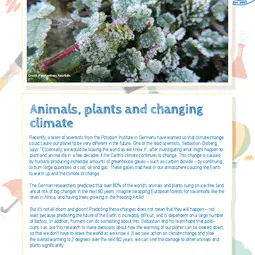
This is a kids' version of the EGU article: 'Animals, plants and changing climate'. It was written by Jane Robb and reviewed for scientific content by Sam Illingworth and Frederike Wittkopp and for educational content by Phil Smith.
Translations
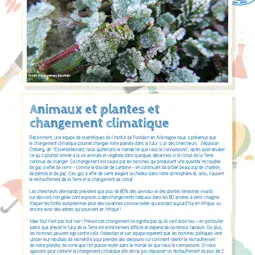
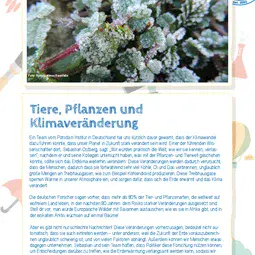
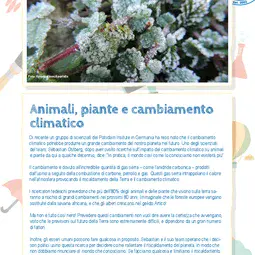
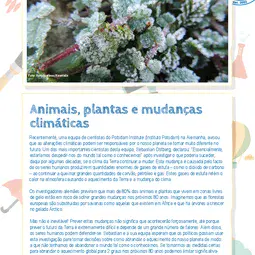
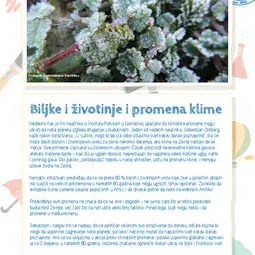
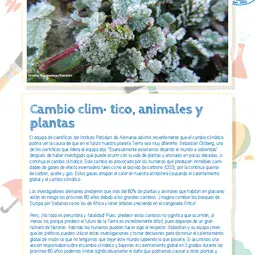
All English-language Planet Press releases are carefully edited, reviewed and proofed, by scientists, educators and EGU staff. Please note that once translated, Planet Press releases receive no further checks from EGU staff. For this reason, we cannot guarantee their accuracy, though we trust the quality of our voluntary translators and are grateful for their work.

